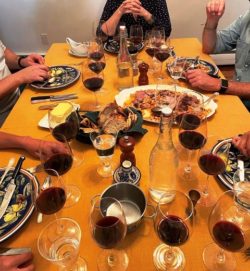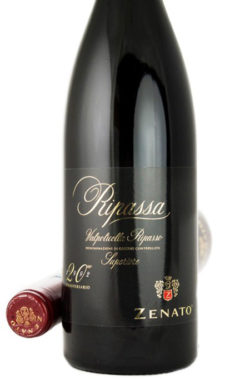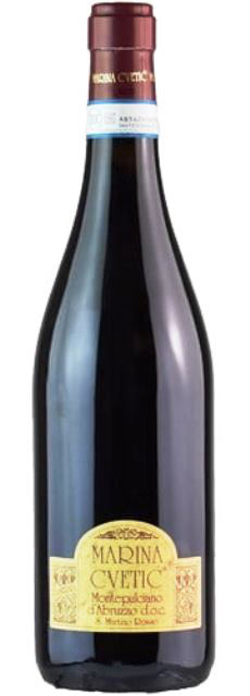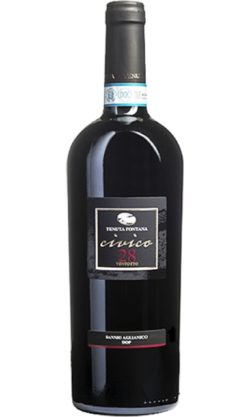Read Time: 5 Minutes Subscribe & Share
Grapes Of Red
 You have probably heard of (and drunk) classic Italian red wines like Amarone, Barolo and Chianti. With over 500 grape varieties, Italy’s wine producing terroir offers an endless variety of quality vintages, each with its own personality. From regional varietals to unique wine-making techniques, here’s a guide from Kitchen Detail to three Italian reds you should add to your fall palette. My father, whom we refer to as the RWM (Resident Wine Maniac), has purchased some of the wines through Calvert Woodley and MacArther Beverages in Washington, DC, Unwined in Alexandria, VA and the Total Wine outlet as well as Whole Foods in Northern Virginia.
You have probably heard of (and drunk) classic Italian red wines like Amarone, Barolo and Chianti. With over 500 grape varieties, Italy’s wine producing terroir offers an endless variety of quality vintages, each with its own personality. From regional varietals to unique wine-making techniques, here’s a guide from Kitchen Detail to three Italian reds you should add to your fall palette. My father, whom we refer to as the RWM (Resident Wine Maniac), has purchased some of the wines through Calvert Woodley and MacArther Beverages in Washington, DC, Unwined in Alexandria, VA and the Total Wine outlet as well as Whole Foods in Northern Virginia.
Poor Man’s Amarone
You may remember Verona as Soave country from our summer white wine post, but the Veneto wine-making zone is probably best known for its red Valpolicella, made from three grape varieties: Corvina Veronese, Rondinella and Molinara. Moving up on the ranking of reds, Amarone is made in the same area of Valpolicella but with dried grapes of the same varietals, creating a wine that is fuller bodied and has more structure – and usually a higher price tag.
zone is probably best known for its red Valpolicella, made from three grape varieties: Corvina Veronese, Rondinella and Molinara. Moving up on the ranking of reds, Amarone is made in the same area of Valpolicella but with dried grapes of the same varietals, creating a wine that is fuller bodied and has more structure – and usually a higher price tag.
Ripasso is a third wine made in the same area and is often referred to as Poor Man’s Amarone or Baby Amarone. Once the dried grapes have been pressed for Amarone, some local winemakers reuse the pomace by adding it to Valpolicella for maceration, producing Ripasso – which literally means repassed but in this sense more akin to ripassare in cooking, which means to sauté or quickly cook in a sauce. As a result, you have a wine that combines the accessibility of Valpolicella with the complexity of Amarone.
My introduction to this enological version of “waste not, want not” was Zenato’s Ripassa Valpolicella Ripasso DOC Superiore. Sergio Zenato founded his nameseake winery near Lake Garda in 1960 and dedicated his energy to raising the status of a local white wine, Trebbiano di Lugana. He contributed to establishing the Lugana appellation and eventually acquired vineyards in the Valpolicella Classico area, introducing all three of the traditional Veneto red wines to his production. Although Sergio passed away in 2008, his wife Carla and their children, Alberto and Nadia, continue to run the business he started over 60 years ago.
Zenato’s Ripasso is made with Corvina Veronese, Rondinella and Corvinone. It is velvety, soft and owes its more structured body to the double fermentation process and Amarone pomace. It has notes of plum, cherry and chocolate and goes down well with aged cheeses like Parmigiano-Reggiano, grilled meat, game, stews and roasts, polenta, and mushrooms.
A Family Affair
 With Masciarelli’s Montepulciano d’Abruzzo DOC Marina Cvetic we move south to the region that is home to the highest peak of the Apennines and the castle in Ladyhawke. Though visiting Gran Sasso or Rocca Calascio may not be on your itinerary this month, you can still get a taste of the terroir through its most ubiquitous wine.
With Masciarelli’s Montepulciano d’Abruzzo DOC Marina Cvetic we move south to the region that is home to the highest peak of the Apennines and the castle in Ladyhawke. Though visiting Gran Sasso or Rocca Calascio may not be on your itinerary this month, you can still get a taste of the terroir through its most ubiquitous wine.
Montepulciano is a red varietal that has been cultivated for centuries in Abruzzo, Marche, Molise and Lazio, and should not be mistaken with the Tuscan wine Vino Nobile di Montepulciano, which is made from Sangiovese and other grapes. Masciarelli’s Marina Cvetic Montepulciano d’Abruzzo Riserva is made from only Montepulciano grapes that grow on the winery’s southernmost estate near Chieti, equidistant from the sea and the massif the Maiella.
Gianni Masciarelli began making wine at his father’s winery in 1978 and founded his own vineyard in 1981. Like Sergio Zenato, he was a pioneer in putting his region on the wine map and elevating a local grape to the status of a world-class wine. The unusual name of the wine comes from his Croatian wife, Marina Cvetic, whom Gianni met in 1987 and married in 1989. Also like Zenato, Gianni passed away in 2008, but Masciarelli continues production today under the leadership of his wife Marina and their daughter Miriam Lee.
This medium-bodied wine is best drunk young. On the palate it is a hearty, dry wine with a hint of spice and pepper. Its aroma has a bit of cherry and tobacco. Over the years this Montepulciano has received recognition from both Wine Spectator and Robert Parker. Neither a heady wine nor a light Beaujolais, this rustic red holds up well with salumi, cheeses, roasted winter vegetables, any meat or this cheese souffle. Considering how dry it is, I think it also stands up well to fried baccala and cod, but that goes against the golden rule of fish + white wine.
The Oldest Grape In Italy
There are three great Italian grape varieties, Nebbiolo, Sangiovese and Aglianico. A black grape indigenous to Basilicata and Campania in Southern Italy, Aglianico is sometimes named the Barolo of the South because the wine made from it is full-bodied and complex like its counterpart from the Piedmont. Considered to be one of the most ancient varieties in Italy, some claim even Pliny the Elder, the world’s first wine critic, enjoyed a glass or two. Today Aglianico is cultivated most notably in Basilicata around the defunct volcano Mount Vulture and in Campania near Taurasi, around Monte del Taburno and in other areas around Benevento. You’ll often find an Aglianico in annual wine guides like Wine Enthusiast’s recent Top 100 Best Buys of 2021.
glass or two. Today Aglianico is cultivated most notably in Basilicata around the defunct volcano Mount Vulture and in Campania near Taurasi, around Monte del Taburno and in other areas around Benevento. You’ll often find an Aglianico in annual wine guides like Wine Enthusiast’s recent Top 100 Best Buys of 2021.
Our first experience with Aglianico dates back to 2004 when driving through Benevento on our way from Sorrento to Ascoli. The restaurant we lunched in recommended a local wine to go with our meal, and its quality and complexity convinced us to call the producers and go on a wild car chase in the countryside around Benevento to purchase the wine directly from them. Unfortunately, we have lost record of that first bottle, so our quest continues today to find an equivalent, which is what brought us to Tenuta Fontana’s Campania Aglianico IGT Civico 28.
The Fontana family has been farming since the 1800s, but only in 2009 did the family decide to open a winery. Committed to organic production, Tenuta Fontana’s mission is to produce quality wines at an accessible price. They work with a young oenologist Francesco Bartoletti and have received organic certification from the Istituto per la Certificazione Etica ed Ambientale. Looking for new ways to use their knowledge, in 2018 Tenuta Fontana restored a part of the historic vineyard of the Royal Palace of Caserta and harvested the first grapes in 2021.
The 2017 Campania Aglianico is perhaps still a bit young, but it has an aroma of dark-skinned fruit and clove. Slightly acidic with soft tannins, its full body pairs nicely with robust flavors like a beef stew, ossobuco, lamb, barbecue, or cheeses like caciocavallo.

Juggling nuance between Italian and English, Tatiana lights up her five-burner kitchen top with nostalgia for American food, Bologna-inspired fare and cross-cultural inventions. She and her husband endlessly debate on cooking with or without a recipe. Their son just hopes that dinner will either be plain or have chocolate in it.




Comments are closed here.
Follow this link to create a Kitchen Detail account so that you can leave comments!